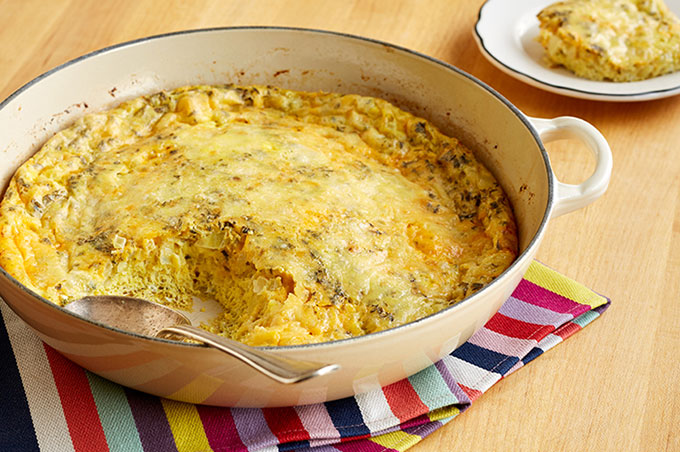Picture the inside of your refrigerator. What do you see there? A few eggs, a scrap of cheese, a few lonely vegetables, leftovers from last night’s dinner, and Challenge butter, right? Welcome to the makings of a tasty frittata, in which anything is a potential ingredient and rules go out the window.
The word frittata is Italian for “fried,” referring to the method of cooking ingredients, bound together by eggs, in a non-stick pan. Humble peasant food, in France, it might be called an omelet; in Spain, a tortilla. Those examples might look a little different, but the roots are basically the same. Check out our Oven-Baked Onion Frittata for a recipe, or make up your own using our tips for foolproof frittata:
- Start on the stove, finish in the oven. Although recipes vary on this, we find that frittatas firm up best with a combination of stovetop cooking followed by finishing in a 350° F oven.
- Use the correct pan. A skillet with an oven-proof handle, proper seasoning and plenty of melted butter is essential. If you use a non stick pan a coating of butter also adds flavor and provides for better release.
- Throw in everything but the kitchen sink. Some of the greatest frittatas are comprised of whatever happens to be around. Like so much cucina povera (“frugal” Italian dishes like panzanella and ribollita), the frittata is endlessly adaptable. Roasted cauliflower, turkey sausage, and even cooked rice are perfectly at home in a bed of eggs and cheese.
- Match your flavors. If you prefer a more methodical approach, use a classic flavor pairings in your frittata like tomato, basil and fontina, leek, potato and Gruyere or zucchini, sun-dried tomatoes and feta with oregano.
- Give it some extra heat. If you like a crispier top to your frittata, give it an extra minute under the broiler before removing from the oven.
- Let it cool. Don’t rush to dish up your frittata: to set properly give it at least five minutes to cool.

